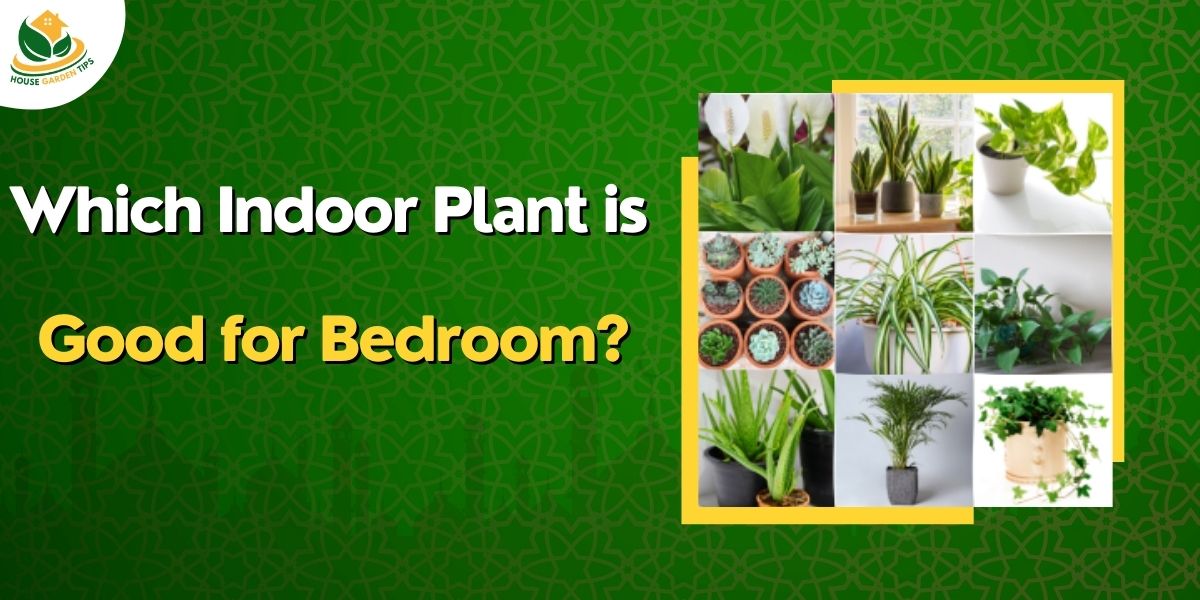Table of Contents
SMALL INDOOR PLANTS
The popularity of indoor plants is growing, not only because they add beauty and life to a space, but also because they can help to improve air quality. The best part of growing indoor plants is that you can easily incorporate them into your home in various ways. They may be small, but they pack a big punch when it comes to creating beautiful spaces in your home. They require minimal maintenance and can be placed almost anywhere in your home to add some colour and liveliness. The following list contains some of the best indoor plants that can decorate your windowsill.
List of Best Indoor Plants for a Cute Indoor
AIR PLANTS
Air plants can be placed in a glass jar to bring nature inside and create a wonderful natural look in your home! The reality is that all air plants are easy to be taken care of and will grow beautifully if you are patient. They have a slight fragrance than most other plants. But if you don’t mind that, these are an excellent choice! Soil is unnecessary for air plants because they do not need roots to survive, so they can thrive in places that receive little light and regular watering. This means that you can place your air plants in areas that are darker and less humid than your typical plant setting and they will still thrive.
CACTUS
The Cactus is a smaller indoor plant that does well in a small space. They are easy to be taken care of and can be grown in a variety of climates. Cacti are drought tolerant and do well in a low water environment. They also do well in low conditions. This makes them a good choice for someone who is renting an apartment or who does not have a lot of natural light. Temperature is key when it comes to caring for cacti. If the cactus is kept at a warm temperature, it will grow and bloom better, if the cactus is kept cold, it may die. Never keep these succulents outside during cold weather. Temperature ranges for succulents are between 65 to 75°F during the day and 55 to 60 °F at night. During the summer, it is ideal to keep the plant outside during the day and bring it inside at night.
SEDUM PLANTS
An easier care succulent is the sedum plant which is very popular and easy to grow. They look good planted in a decorative pot with moss covering the soil so that the plants look green and lush year-round. Something worthwhile to note is that these little succulents are so hardy they have been known to survive freezing temperatures. The ideal temperature range is from 50 to 70°F during the daytime and between 35 to 45°F at night.
DEVIL’S IVY
Devil’s Ivy also known as Mother-in-law’s Tongue; this flowering plant is a tropical vine that works well as a hanging plant. It is an easy-care plant that likes bright, indirect light from the sun as well as moist soil. It is often used as a houseplant because it grows quickly and can thrive in low light. It can grow well in temperatures ranging from 40 to 80°F. However, if the humidity level is too high, the plant will start dropping leaves and eventually die.
PEACE LILY
The peace lily is a small, stemless plant that typically grows up to 18 inches tall. It has leaves that are divided into three leaflets and blooms with white, trumpet-shaped flowers in late summer or fall. Its hardy nature makes it an excellent choice for indoor plants. Their leaves grow best in temperatures between 60-80°F and bright indirect light. It does not require much water and fertilizer to thrive indoors. This beautiful small houseplant can be grown and maintained in your indoor garden.
STRING OF PEARLS
The string of pearls is an easy-to-grow plant that requires little maintenance, making it an ideal choice for amateur gardeners. It requires bright, indirect sunlight to maintain its vibrant green colour. Water when the soil is dry to the touch and water it thoroughly. Then let it dry out before watering again. Plant the string pearls in a location with a temperature between 60-80°F and place it in an area with moderate humidity for the best care.
SPIDER PLANT
The spider plant is a popular houseplant that can grow up to 12 inches in height. This easy-to-grow plant requires a bright space with moist soil, but it’s tolerant of a wide range of growing conditions. Many growers keep spider plants on their desks because they help to reduce stress and create a pleasant work environment. It prefers a cooler environment to thrive.
MONEY PLANT
The plant was named after its thin green leaves that resemble the forms of cash bills or coins. Although the tree is considered hardy in temperate regions, it needs to be kept out of direct sunlight to prevent burning. Indirect light is best for money plants. It’s the best choice for small living spaces or apartments as it requires very little light or water to grow.
LUCKY BAMBOO
Lucky bamboo is a great plant for smaller spaces. It grows quickly, reaching 4-6 feet in height within a year or two, and can be easily pruned to keep it in bounds. It’s also a great low-maintenance plant. Soil type and temperature don’t matter for these species. The more sunlight and water they receive, the faster they shall grow! Just rinse the planter well once a week and trim off any dead or dying leaves.
POTHOS
Pothos is another great plant for smaller spaces. It’s easy to care for – just water the soil when felt dry and make sure it gets plenty of indirect sunlight. It’s the perfect houseplant and prefers a humid environment, so be careful with its placement near air conditioning vents. Temperature and soil types don’t matter either since Pothos plants will adapt to most conditions.
BOSTON FERNS
Boston ferns are very easy to care for. What’s more is that they come in a variety of colours and shapes, so there’s something for every décor style! Temperature and soil types don’t matter either as long as one makes sure the plant gets plenty of light and avoids overwatering. The Boston fern makes a great hanging basket or indoor centrepiece! Just to make sure the drainage holes are cleaned out, so the roots don’t rot.
JADE PLANTS
Jade plants can live for many years and they are easy to care for and grow quickly in a pot. They are a great addition to any room. Following are some tips for taking good care of a jade plant:
Plant in well-draining potting soil. Jade plants grow well where there is plenty of bright light. But avoid placing it near a window where it will receive too much sunlight. If the leaves begin to turn yellow, reduce the watering schedule to once a week or less. In the fall, you can repot your plant into a larger pot and fertilize it with a high nitrogen fertilizer to encourage new growth. Allow the plant to dry slightly between waterings and be sure to water thoroughly when the soil is dry to the touch. Temperature is also important. Keep the temperature at or above 60°F during the day and below 50°F at night. Inspect the roots occasionally for any signs of pests or disease and treat them immediately. Regular pruning will encourage new growth and keep the plant looking at its best. Always remove any dead or diseased foliage before pruning, Pruning should be carried out with sharp pruning shears so that the stem stub is not damaged.
ROSEMARY PLANT
Rosemary plant is drought tolerant and easy to grow indoors. It is fragrant and beautiful and can bring a touch of ecstasy into your home. Rosemary is an excellent herb to use in cooking, and it makes a great addition to the garden as well. Caring for a rosemary plant is easy and requires minimal effort. Indoors, Rosemary plants prefer a location with bright and indirect light conditions. Place the pot in a bright location away from direct sunlight, and water it enough to keep the soil moist but not wet. It should grow best in temperatures ranging from 60 to 70°F. Rosemary does not require fertilizer or pesticides to thrive, but should you notice the plant developing mildew or red spider mites, treat it with a fungicide or insecticide. Remove dead or dried leaves and trim back the plant periodically to promote healthy growth.
RADIATOR PLANT
The radiator plant is a type of small indoor plant that grows best in warmer temperatures. It is a succulent that typically has a dome or barrel-shaped growth habit. It has a thick stem with small fleshy leaves. It tolerates low light levels, making it ideal for low light environments such as a bedroom or office. Because of its drought tolerance, it can be grown without any additional watering once it gets established. Water once a week when the soil is dry to the touch. Give it plenty of indirect sunlight and avoid direct sunlight to prevent leaf burns. Maintain it at a temperature of 70 °F or higher to avoid fungal infections. Allow it to dry out between waterings and soak it for no more than 10 minutes at a time, as overwatering will cause the plant to become limp and rot. The plant is also easy to propagate by planting its cuttings or propagating its seeds.
PROPAGATION: Remove the seed pods and place them in a warm place until they open. Once the pods have split, remove the seeds and wash them off to remove the pulpy covering that surrounds them. Store the seeds in a sealed container in the fridge until you’re ready to use them.
BABY TOES PLANT
The baby toes plant is one of the most colourful plants available to grow indoors. These interesting plants are of a slow-growing variety that requires very little maintenance, making them ideal houseplants for beginners. It requires only occasional watering and occasional pruning to keep it healthy and attractive. It is also prone to powdery mildew, so try to avoid placing it in humid places like the bathroom or kitchen.
Place the plant in a spot where it will receive some indirect sunlight and the temperature is around 70°F. Water the plant once a week or in alternate weeks if necessary. Keep an eye on the soil and make sure it does not dry out completely. Once a month, make sure the leaves get a thorough cleaning by wiping them off with a damp cloth. You can use a spray bottle filled with water to mist your plant as well. Feed the plant once every six weeks with an all-purpose fertilizer diluted with water according to the directions on the package. Re-pot the plant once a year in the spring when the roots seep and grow into the bottom of the pot. Dig a hole that is about twice as wide as the pot and fill it up with potting soil. Remove the plant from the pot and gently lower it into the hole. Fill in the rest of the hole with the soil and get it down firmly with your palms so that it is level with the rest of the soil. Place a layer of mulch around the plant to keep it moist and to help insulate it against the heat in the summer. For the best results, position the Baby Toes plant near a south-facing window as this help provide adequate sunlight for growing healthy green leaves.





